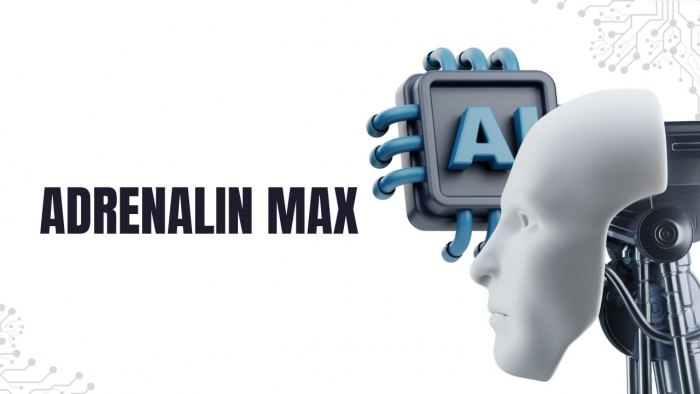Related Articles

Market research has always been the backbone of successful businesses—helping brands understand customer needs, industry shifts, and competitor strategies. Traditionally, research meant long surveys, manual data collection, and costly analyst reports. But today, AI-powered market research tools are transforming the process, offering faster, smarter, and more affordable insights.
In this blog, we’ll explore how AI can automate market research, the benefits it brings, the best ways to apply it, and the challenges you should keep in mind.
AI doesn’t just speed up data collection; it redefines the entire research process. Key advantages include:
AI-driven sentiment analysis tools process reviews, comments, and social media posts to gauge how customers feel about products, competitors, or industry trends. This helps brands tailor messaging, improve products, and predict consumer behavior.
Machine learning algorithms analyze search data, social mentions, purchase behaviors, and news trends to predict upcoming market shifts. For example, identifying rising consumer interests (like sustainable packaging or AI assistants) before they hit the mainstream.
AI scrapes competitor websites, pricing updates, product launches, and digital ads to give businesses a real-time snapshot of competitive strategies. Tools like Crayon and Kompyte automate this process, helping companies adjust faster.
AI-enhanced survey platforms don’t just collect responses; they automatically interpret open-ended answers, cluster feedback into themes, and provide actionable takeaways.
AI models track patterns in purchase history, browsing behavior, and loyalty program data. This allows businesses to segment audiences with precision and predict what each group is likely to buy next.
AI-powered social listening tools monitor millions of online conversations, hashtags, and mentions. Brands can instantly understand what’s trending, how campaigns are being received, and where to engage.
AI automates report creation with dashboards that present insights in easy-to-digest formats—charts, infographics, and predictive maps—reducing the time analysts spend building presentations.
Here are some popular AI-driven platforms:
Different AI tools excel in different parts of the market research workflow (social listening, survey analysis, competitor intelligence, etc.). Here’s a comparative look at some of the leading options:
| Tool | Main Strengths / Use Cases | Key Features | Weaknesses / Caveats | Pricing / Cost Structure* |
|---|---|---|---|---|
| Brandwatch | Excellent for social listening, brand sentiment, trends, reputation monitoring | Multilingual sentiment analysis, image recognition, influencer tracking, trend alerts | Can be expensive for smaller teams; steep learning curve; may require customization for niche markets | Enterprise-level/custom pricing (depends on data volume, coverage). |
| Crayon | Competitive intelligence & real-time tracking | Monitors competitor pricing, messaging, product launches, digital campaigns | Less strong on deep consumer sentiment or large-scale survey analytics | Usage-based / enterprise pricing model (not publicly listed). |
| Qualtrics XM / Qualtrics (with AI modules) | Robust survey + experience management + deep analytics | AI-driven text analysis, choice modeling, predictive insights, segmentation | Can be complex and pricey; may require training | Custom / enterprise pricing. |
| Semrush | Market size, keyword gap analysis, competitive web metrics | Traffic analytics, keyword research, competitive overlap, trend estimation | Not as strong in sentiment, open text processing, or survey side | Plans: Pro ~$139.95/mo, Guru ~$249.95/mo, Business ~$499.95/mo (USD) |
| Survey / Survey + AI-enhanced survey tools (e.g., SurveyMonkey, others) | Automated survey creation, filtering, sentiment / open-end text processing, rapid insights | AI-assisted question recommendations, open-text clustering, predictive scoring | Limits on responses, exports, or logic in lower-tier plans; quality of open-text interpretation may vary | Tiered pricing. For instance, one tool offers a “Lite (free)” tier, “Plus” ~USD 50/month, “Premium” ~USD 100/month, and enterprise versions. |
| Social Listening / Multi-channel intelligence platforms (e.g. Sprinklr, others) | Tracking across many channels (social, forums, images, video), trend surfacing | Visual mention detection, multi-channel integration, alerting, dashboards | Cost can scale steeply; for specific markets, data coverage might lack depth | Custom / enterprise pricing. |
| Blix, Yasna, other newer “verbatim / AI analysis” tools | Specialize in open-ended text analysis, clustering, verbatim summarization | Fast clustering of feedback, insight extraction, visual summaries | May lack broad competitive intelligence or social listening depth | Freemium or trial models often available; pricing depends on usage / scale. |
*Note: Pricing is often not publicly listed (especially for enterprise-level tools). Always request a quote based on your data volume, users, and markets.
As AI evolves, expect:
AI is not just a tool—it’s becoming the new research partner for businesses. By automating repetitive tasks, analyzing vast data streams, and predicting future trends, AI empowers companies to move faster and smarter. But the real magic happens when human creativity and strategic thinking combine with AI-driven insights.
If you embrace this balance, automated market research can give you a significant competitive edge in today’s fast-moving business world.
Be the first to post comment!
